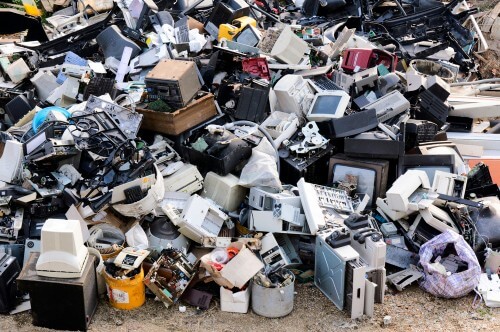Pirated export of electronic waste to the third world causes water and soil pollution there on a huge scale; Electronics companies do not meet their obligations to recycle

Significant information gaps assume an increasingly important role in thwarting efforts in the field of environmental protection - including the reduction of waste originating from the electronics industry.
A study involving researchers from three research institutes in the US (MIT, Materials Systems Laboratory and the National Center for Electronics Research) funded by the US Environmental Protection Agency, and conducted with the aim of promoting the solution to the problem of electronic waste in the world, was published in a report in the month past. According to the report, there is no information available regarding the route taken by electronic components, which makes it difficult to solve the current problem of exporting electronic waste. The research includes reference to televisions, mobile phones and computers.
The report reiterates and emphasizes the need to formulate trade standards for used products in order to accurately track such products, as well as the need to examine specific trade standards used by exporters for used electronic material that comes in the form of a complete unit. As part of the free flow of information that these standards will enable, the report also recommends more readily available access to trade data at the shipment level, with the aim of enabling more accurate analyzes of the flow of electronic materials exported from the US. The report also recommends increased cooperation and the exchange of information between supervisory authorities regarding the flow of goods of this type, as well as increased reporting regarding the goals of re-exports, analysis of the flow of goods over several years and more assessments regarding the flow of exports of used electronic components.
Among the challenges underlying the study regarding e-waste and its export from the US to other parts of the world, the report notes "limited data collection mechanisms, uneven trade standards, lack of consistent definitions for the classification and labeling of used electronic components, minimal regulatory oversight, and limited consensus Regarding the definitions of the end uses.”
As for the destinations to which this waste is sent from the USA, these include first and foremost Latin America, the Caribbean and North America. The continent of Asia is the second most common destination, while Africa is the least common of all. Regarding mobile phones, the main destinations are Hong Kong, Paraguay, Guatemala, Panama, Peru and Colombia. At the same time, the report notes, in several cases these countries function as "intermediate stations" and not as the final destinations of the products before they are re-exported to another country in the same region. Asian regions, particularly Hong Kong, the United Arab Emirates and Lebanon, were listed as the final destination countries for computers, especially laptops.
About 80% of used electronic components, including mobile phones, television receivers and monitors, end up in countries with large middle-class populations, while Africa receives only a small portion of the electronic waste that originates in the US. However, according to the words of a spokesperson from the Interpol organization, despite the fact that it is indeed legal to export products that have been thrown into waste as long as they can be refurbished or reused in another way, a large amount of this waste is sent to Africa and Asia under false pretenses - "most of this waste is classified as " Used goods" even though in reality these products do not work at all. These are usually diverted to the black market and disguised as used goods in order to avoid the costs associated with legal circulation," the spokesperson notes. A significant part of the export of electronic waste is transferred to countries outside of Europe, including countries in West Africa. The handling of this waste in these countries is usually done within the framework of the private and informal sector, which leads to significant environmental pollution and health risks affecting the local population," adds the spokesperson.
According to the European Environmental Protection Agency, as cited in the same article, many of the countries facing the challenge of electronic waste treatment are not aware of the scope and great impact of this challenge, mainly due to a lack of information. They did not regulate a mechanism to track used electronic materials entering their country and therefore, failed to protect themselves from this problem.
"The worst scenario is to send used electronic products to developing countries for dismantling, since the methods used in these countries are usually harmful to the health of the people working in dismantling, and to the environment in which they live," said one of the researchers. "The risk is only increasing as the volume of electronic components in the company continues to grow," he adds and says. The problem is not only limited to the fact that there is a lack of information suitable for solving this issue - there is also an information gap regarding the destination to which this waste reaches, whether it actually reaches its designated place or is simply thrown away as normal waste, according to the Interpol spokesperson.
Estimates in the field claim that electronic waste should increase by 33% from a level of 50 million tons in 2012 to 65 million tons by 2017. China and the United States lead as the largest producers of electronic waste, with China producing 12.2 million tons and the United States 11 million tons. However, America produces about 30 kg of electronic waste per person every year, a rate higher than the level of 5 kg of electronic waste per person every year in China.
